Developmental: Positioning Your Infant Through Play
These instructions for Children's Hospital of Philadelphia (CHOP) patients describe ways to position a baby or young child through play.
Instructions for positioning your child through play:
Reviewed on January 1, 2023, by Jill Velis, MS, OTR/L
Lying on the stomach (prone)
-
This position strengthens the back and neck muscles. Lay on your back with the baby on your chest facing you. Support the baby's chest with your hands. For infants 5-6 months of age, encourage them to reach for a toy in this position.
-
Do not leave the baby unsupervised on their stomach. Lay the baby on firm, flat surfaces. Do not place the baby in this position on soft pillows or sofa cushions. Soft surfaces make it difficult to lift their head and may cause the baby to suffocate.
|
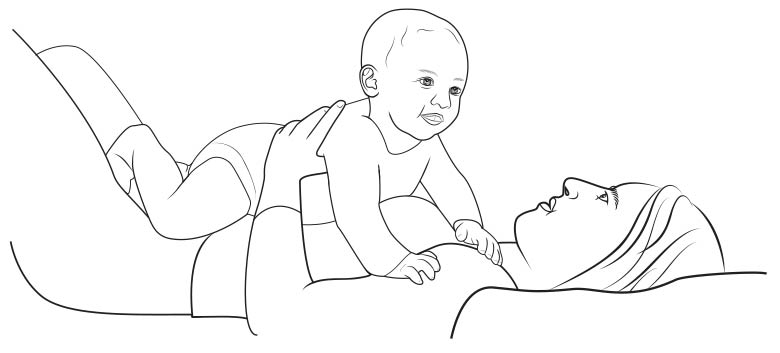 |
Lying on the back (supine)
-
This position strengthens stomach muscles and allows eye contact. Hold a toy within easy reach for the baby to touch and explore for ages 3 - 5 months. Around 5 months old, encourage the baby to reach for and touch their feet in this position. Try a sock rattle so that it makes a noise when the baby kicks.
-
Always place the baby on a firm, flat mattress without any soft bedding underneath them when they are sleeping to reduce the risk of sudden infant death syndrome.
|
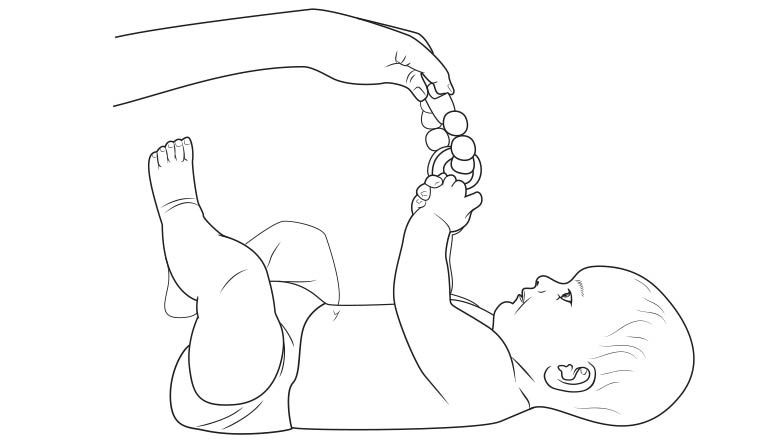 |
Lying on the side
-
This position encourages your child to keep their hands together and develop eye contact with hands and toys. For babies 3-5 months old, prop a book or toy in front of the baby in this position and help them reach for and touch the pictures.
-
Beginning around 3 months, encourage your baby to roll from their back into this position. After playing in this position, move a toy or your face from the side the baby is facing over the other side and allow the baby to follow with their eyes and head. Encourage rolling to the left and the right sides.
|
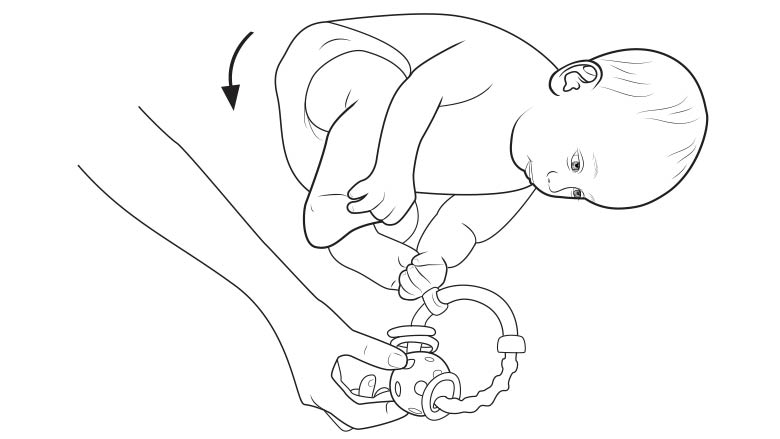 |
Sitting
-
This position helps your child learn to lift their head and strengthen their back and neck muscles.
-
It can be used for infants more than 3-4 months old. Support the child with your hands under the arms if they cannot hold their trunk steady. Support the child at the waist beginning around 5-6 months old.
|
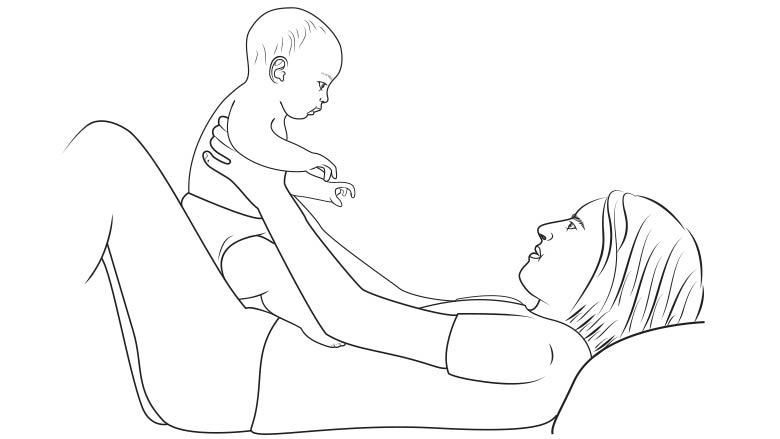 |
Standing
-
Never leave an infant in a mesh playpen or crib with the rails down. Make sure that siderails are locked. Remove large toys or boxes from inside the playpen so they cannot be used for climbing out. Avoid tying any toys on the sides or across the top of the playpen. This is a safety hazard.
-
Do not use walkers, they can fall downstairs or tip over. Instead try standing activity centers or saucers.
|
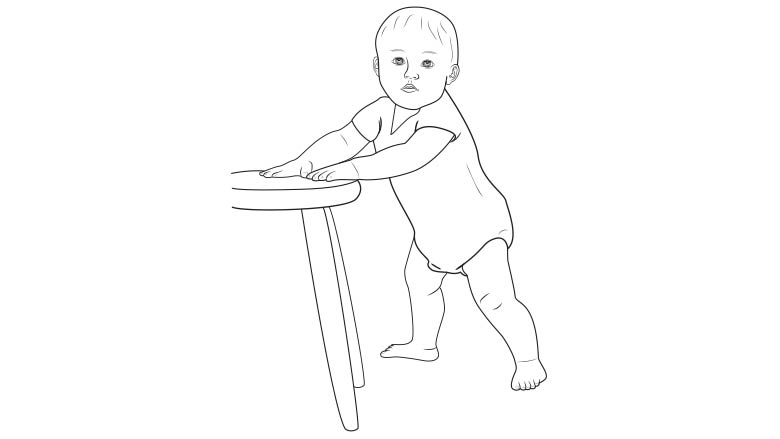 |